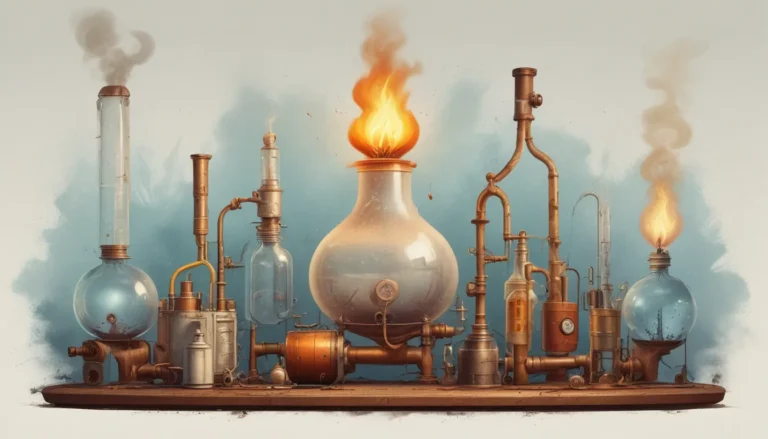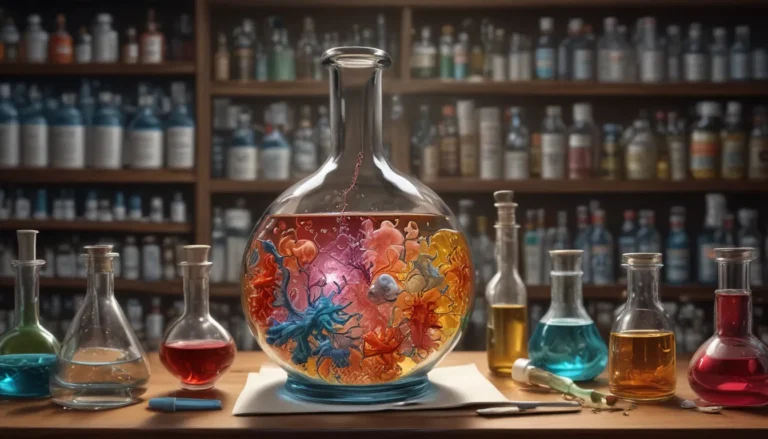A Note About Images: The images used in our articles are for illustration purposes only and may not exactly match the content. They are meant to engage readers, but the text should be relied upon for accurate information.
Chemistry is a captivating realm filled with intricate processes that shape the world around us. One such fundamental concept is substitution reactions, which play a vital role in organic and inorganic chemistry. These reactions involve the replacement of atoms or groups within molecules, serving as the building blocks for numerous scientific discoveries and industrial applications.
In this comprehensive guide, we will delve into the fascinating world of substitution reactions, uncovering 13 extraordinary facts that shed light on their importance and relevance in various fields. From the basic principles to the diverse applications, this exploration will expand your knowledge and appreciation for this essential chemical phenomenon.
Substitution Reaction: A Key Concept in Chemistry
Substitution reactions serve as the cornerstone of organic chemistry, facilitating crucial transformations in molecules by replacing one atom or group with another. These reactions are instrumental in laboratory experiments, industrial processes, and everyday life, making them a fundamental concept for chemists and enthusiasts alike.
The Two Faces of Substitution Reactions
There are two main types of substitution reactions: nucleophilic and electrophilic substitutions. Nucleophilic substitution involves the attack of a nucleophile on an electrophile, leading to the displacement of a leaving group. On the other hand, electrophilic substitution occurs when an electrophile replaces a hydrogen atom in a molecule, resulting in the formation of new compounds.
Unraveling Nucleophilic Substitution Reactions
Nucleophilic substitution reactions are characterized by the donation of a pair of electrons from a nucleophile to an electrophilic center, causing the expulsion of a leaving group. This process is widely utilized in the synthesis of pharmaceuticals, agrochemicals, and other organic compounds with industrial significance.
Decoding Electrophilic Substitution Reactions
Electrophilic substitution reactions involve the replacement of a hydrogen atom in a molecule with an electrophile, resulting in the formation of diverse products such as dyes, fragrances, and polymers. These reactions are commonly observed in aromatic compounds and play a vital role in organic synthesis.
The Intricate Mechanisms of Substitution Reactions
Substitution reactions follow distinct mechanisms based on the type of reaction and the nature of the reactants involved. The most prevalent mechanisms include SN1 (unimolecular nucleophilic substitution), SN2 (bimolecular nucleophilic substitution), and SE2 (bimolecular electrophilic substitution), each dictating the rate and outcome of the reaction.
The Impact of Substrate Structure
The structure of the substrate significantly influences the reactivity and selectivity of a substitution reaction. Factors such as steric hindrance, electronic effects, and resonance stabilization play a pivotal role in determining the success and efficiency of the reaction, highlighting the importance of substrate analysis in chemical processes.
Substitution Reactions: Paving the Way in Biochemistry
Beyond synthetic chemistry, substitution reactions play a crucial role in biochemical processes, catalyzed by enzymes in living organisms. These reactions facilitate essential metabolic pathways and molecular transformations, underscoring their significance in biological systems.
Substitution Reactions: A Boon for Medicinal Chemistry
Medicinal chemists harness the power of substitution reactions to develop and synthesize novel drugs with enhanced properties. By strategically modifying existing drug molecules through substitution reactions, researchers can optimize potency, selectivity, and other desirable characteristics, leading to groundbreaking advancements in medicine.
Environmental Perspectives on Substitution Reactions
Understanding substitution reactions is paramount for evaluating the environmental impacts of various chemicals. Substitution reactions are instrumental in the degradation of pollutants, transforming harmful substances into less toxic forms and contributing to environmental remediation efforts and sustainability initiatives.
Cross-Coupling Reactions: A Marvel in Chemistry
Cross-coupling reactions, a subtype of substitution reactions, enable the selective linkage of two carbon atoms using transition metal catalysts. These innovative reactions have revolutionized organic synthesis, allowing for the efficient construction of complex carbon frameworks with high precision and yield.
Substitution Reactions: Driving Industrial Innovation
The application of substitution reactions is widespread in industrial production, particularly in the manufacturing of plastics, polymers, and various chemical intermediates. These reactions play a pivotal role in the synthesis of essential products that shape our daily lives, underscoring their significance in industrial processes.
Substitution Reactions: Shaping Material Science
In the realm of material science, substitution reactions are instrumental in the synthesis and modification of advanced materials. By selectively replacing specific atoms or functional groups within materials, scientists can tailor their properties, leading to enhanced performance, durability, and functionality in various applications.
Substitution Reactions: A Gateway to Natural Product Synthesis
Natural product synthesis often relies on substitution reactions to recreate intricate molecules found in nature. These reactions empower chemists to access valuable natural compounds, including pharmaceuticals, flavors, fragrances, and agricultural chemicals, fostering innovation in drug discovery and flavor chemistry.
In conclusion, the 13 extraordinary facts about substitution reactions offer a glimpse into the diverse applications, mechanisms, and significance of this fundamental chemical process. From organic synthesis to environmental remediation, substitution reactions continue to shape the landscape of chemistry, driving innovation and advancements across various domains.
FAQs: Unveiling the Mysteries of Substitution Reactions
Q: What is a substitution reaction?
A: A substitution reaction involves the replacement of an atom, ion, or group within a molecule by another atom, ion, or group. This fundamental process plays a pivotal role in organic chemistry, industrial applications, and environmental processes.
Q: What are the different types of substitution reactions?
A: There are two primary types of substitution reactions: nucleophilic and electrophilic substitutions. Nucleophilic substitution involves the attack of a nucleophile on an electrophile, while electrophilic substitution entails the replacement of a hydrogen atom by an electrophile in a molecule.
Q: Why are substitution reactions important?
A: Substitution reactions are essential for synthesizing new compounds, modifying existing molecules, and catalyzing key processes in drug development, material science, and environmental sustainability. These reactions underpin a wide range of scientific and industrial applications, making them indispensable in chemical research.
Q: What role do substitution reactions play in biochemistry?
A: Substitution reactions catalyzed by enzymes in living organisms drive essential metabolic pathways and molecular transformations. These reactions are integral to biochemical processes, influencing the synthesis and breakdown of biological molecules critical for cellular functions and organismal health.
Q: How do reaction conditions affect substitution reactions?
A: Reaction conditions such as the presence of leaving groups, solvent characteristics, and temperature exert a significant influence on the mechanism, rate, and selectivity of substitution reactions. By optimizing reaction conditions, chemists can control the outcome of reactions and tailor product formation based on specific criteria.
Embark on a Journey of Discovery with Substitution Reactions
Substitution reactions stand as a testament to the intricacies and wonders of chemistry, shaping the way we understand and interact with the world around us. With a deeper insight into their mechanisms, types, and applications, you can embark on a journey of discovery that unveils the hidden potential of these fundamental processes.
If you are curious to explore more about substitution reactions and their remarkable implications, delve into our array of articles on astounding facts and captivating insights. Expand your knowledge, broaden your horizons, and cultivate a deep appreciation for the captivating realm of substitution reactions that continues to inspire and drive innovation in the scientific community.
Join Us in Exploring the Marvels of Substitution Reactions
At the heart of our commitment lies a dedication to deliver engaging and reliable content that enriches your understanding of the world of chemistry. Each fact shared is a testament to the diverse insights contributed by individuals like you, fostering a community of knowledge and discovery. Trust in our meticulous editorial process to uphold the highest standards of accuracy as you embark on a journey of exploration and learning with us.






